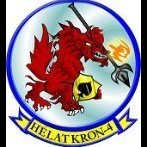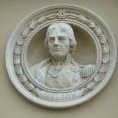-
Posts
1,637 -
Joined
-
Last visited
Contact Methods
-
MSN
ian_h_grant@hotmail.com
Profile Information
-
Gender
Male
-
Location
Ottawa, Canada
-
Interests
Cycling, Nordic Skiing, Back Country Canoe Camping, Pets, Ships
Recent Profile Visitors
-
 mtaylor reacted to a post in a topic:
11th century viking crew and freight in 1:25
mtaylor reacted to a post in a topic:
11th century viking crew and freight in 1:25
-
 mtaylor reacted to a post in a topic:
11th century viking crew and freight in 1:25
mtaylor reacted to a post in a topic:
11th century viking crew and freight in 1:25
-
 CraigVT reacted to a post in a topic:
HMS Victory by CraigVT - Panart - 1:78
CraigVT reacted to a post in a topic:
HMS Victory by CraigVT - Panart - 1:78
-
"very odd" LOL yes I looked for some Roman archers for my ship. Didn't find any but I could have had archers in the form of skeletons, orcs, elves, scantily clad bounteous women, crocodiles, etc. I did see some pretty nice vikings but for tens of dollars for the file. Are you aware that if you buy a file of a "fully rigged" figure you can use the "Pose" function in Blender to manipulate their posture and their clothes etc will just go with the flow and adapt? You can then use the one file you bought to print as many figures you need in whatever poses you want. Even vary their heights a little. You can pose body joints in the arms and legs, head position, usually the fingers, and on some models even jaws, eyes, and eyebrows. If you find a viking you like but which has that stocky build, and the file is free, try importing the file into "3d builder"which is a free microsoft app probably factory installed on your computer. I don't know how to do much in this app, but it does accept bigger files than TinkercAD will open and it is pretty simple to "scale" the figure on any of the x, y, or z axes; or all at once. I used it to scale things for my brother to 3D resin print. I haven't tried the following in 3d builder but I thought of it after my Roman search: if you "shrink" the figure along the x and y axes it will get slimmer. Once it looks reasonable proportioned you can scale it up or down an all axes simultaneously to maintain the new proportions to get the 1/25 scale height you want. It might work!
-
 Scottish Guy reacted to a post in a topic:
11th century viking crew and freight in 1:25
Scottish Guy reacted to a post in a topic:
11th century viking crew and freight in 1:25
-
 Ian_Grant reacted to a post in a topic:
Trireme Olympias by Richard Braithwaite
Ian_Grant reacted to a post in a topic:
Trireme Olympias by Richard Braithwaite
-
 Ian_Grant reacted to a post in a topic:
HMS Victory by CraigVT - Panart - 1:78
Ian_Grant reacted to a post in a topic:
HMS Victory by CraigVT - Panart - 1:78
-
You can search for viking 3D files in many places. If you're very lucky you might fine something for free. I just had a quick look, but as in my search for Romans for my ship many of the Viking figures are for war-gaming and have those really stocky unrealistic builds. I did manage to find a very good Roman Legionnaire for about $20, and he even came rigged. Good luck!
-
 mtaylor reacted to a post in a topic:
Ghost Ship Jenny by Glen McGuire - 1/400 - BOTTLE
mtaylor reacted to a post in a topic:
Ghost Ship Jenny by Glen McGuire - 1/400 - BOTTLE
-
 Ian_Grant reacted to a post in a topic:
Do I need thes books, or just want them?
Ian_Grant reacted to a post in a topic:
Do I need thes books, or just want them?
-
 FriedClams reacted to a post in a topic:
HMS Tiger 1747 by Siggi52 - 1:48 - 60 gun ship from NMM plans
FriedClams reacted to a post in a topic:
HMS Tiger 1747 by Siggi52 - 1:48 - 60 gun ship from NMM plans
-
 Ian_Grant reacted to a post in a topic:
Trireme Olympias by Richard Braithwaite
Ian_Grant reacted to a post in a topic:
Trireme Olympias by Richard Braithwaite
-
 Ian_Grant reacted to a post in a topic:
African Queen by a49kid - Billing Boats - 1:12 - RADIO
Ian_Grant reacted to a post in a topic:
African Queen by a49kid - Billing Boats - 1:12 - RADIO
-
 shipmodel reacted to a post in a topic:
Roman Quadrireme Galley by Ian_Grant - 1/32 Scale - RADIO
shipmodel reacted to a post in a topic:
Roman Quadrireme Galley by Ian_Grant - 1/32 Scale - RADIO
-
 Ian_Grant reacted to a post in a topic:
African Queen by a49kid - Billing Boats - 1:12 - RADIO
Ian_Grant reacted to a post in a topic:
African Queen by a49kid - Billing Boats - 1:12 - RADIO
-
 Glen McGuire reacted to a post in a topic:
The San Marco mosaic ship c. 1150 by Louie da fly - 1:75
Glen McGuire reacted to a post in a topic:
The San Marco mosaic ship c. 1150 by Louie da fly - 1:75
-
 Glen McGuire reacted to a post in a topic:
Ghost Ship Jenny by Glen McGuire - 1/400 - BOTTLE
Glen McGuire reacted to a post in a topic:
Ghost Ship Jenny by Glen McGuire - 1/400 - BOTTLE
-
Thanks. I was always all about building stuff. Still am. ☺️
- 49 replies
-
- Ghost Ship
- Jenny
-
(and 1 more)
Tagged with:
-
 Ian_Grant reacted to a post in a topic:
HMS Sophie by TBlack - kit-bashing Jack Aubrey's first command from the Vanguard Models HMS Speedy
Ian_Grant reacted to a post in a topic:
HMS Sophie by TBlack - kit-bashing Jack Aubrey's first command from the Vanguard Models HMS Speedy
-
 Ian_Grant reacted to a post in a topic:
HMS Sophie by TBlack - kit-bashing Jack Aubrey's first command from the Vanguard Models HMS Speedy
Ian_Grant reacted to a post in a topic:
HMS Sophie by TBlack - kit-bashing Jack Aubrey's first command from the Vanguard Models HMS Speedy
-
 Ian_Grant reacted to a post in a topic:
Ghost Ship Jenny by Glen McGuire - 1/400 - BOTTLE
Ian_Grant reacted to a post in a topic:
Ghost Ship Jenny by Glen McGuire - 1/400 - BOTTLE
-
 Ian_Grant reacted to a post in a topic:
Ghost Ship Jenny by Glen McGuire - 1/400 - BOTTLE
Ian_Grant reacted to a post in a topic:
Ghost Ship Jenny by Glen McGuire - 1/400 - BOTTLE
-
Thanks Dan! I'm exceptionally lucky to have the library's 3D machines (and the laser cutters!) freely available to me within a 1/2 hour walk. Apparently they are soon to upgrade to newer and better models 😊. Have you tried TinkerCAD? It's much simpler to learn than other CAD tools although obviously more limited too. For rectangular things like ladders and gratings it is super easy to draw what you want. The fantail fingers are about as complicated as I'd like to get in TinkerCAD. Yes, you are right about the order of painting. I have now painted the black between the fingers which I should have done first. Now touching up the white then will redo the black edge trim. I looked up your "albums" here on MSW. Wow! They're beautiful models. I especially like the "Maine" and the Viking knarr. Thanks for commenting, Ian
- 502 replies
-
- Quadrireme
- radio
-
(and 1 more)
Tagged with:
-
Yes, topsail schooners are very pretty. When I was making RC boats in high school in the 70's I scratch built one. The fore and aft sails were controlled by my big winch from my large Class M boat; the topsails by a motor drive ripped from a plastic model tank. I added a "bentinck boom" to the foot of the lower topsail because I didn't then know what else to do. My mom sewed the sails for me. On the boat's maiden I had trouble tacking her; decided I had placed the fin keel too far aft. You can see the addition strapped on with meccano for a test, however I then went to university and this ship has gathered dust for decades. I doubt the tank drive would still work. I thought of rejuvenating her with modern gear but as is my habit I built her solid as hell with full bulkheads and there isn't much room to work in her. Maybe someday. And just look at those big ugly bolts sticking out of the lead-filled ballast tube! 🙄 The tank drive. The remainder metal screen was my idea of some form of RF shielding for the small motor's emissions. Guess I had interference issues with the old AM RC set. Wonder what I "grounded" it to? 😏 "Reaching woman" figurehead made from a Zulu drummer from the British-Zulu war. I named her "Charlotte Rhodes" after the old "Onedin LIne" PBS series which I loved. I have two DVD's of "Onedin" episodes; wish they'd make a complete set available.
- 49 replies
-
- Ghost Ship
- Jenny
-
(and 1 more)
Tagged with:
-
Yes, the library printer could barely print it at all. Mortice and tenon is a good idea but I think a more complex CAD program would be needed. I have two days before we go away - I am trying to improve on the paint job. So far it looks promising.
- 502 replies
-
- Quadrireme
- radio
-
(and 1 more)
Tagged with:
-
Kevin, sounds like a good idea but the "frame" would be awfully delicate. Unfortunately when drawing it in TinkerCAD I gave no thought to possibly splitting it so it's a real dog's breakfast of elongated tube sections and "holes", and a patchwork of filler pieces. I'm reluctant to revisit it but may have to if I can't get a decent paint job on it. If you're interested here's the CAD file, at the risk of exposing my clumsy drafting: Galley Fantail(1).zip
- 502 replies
-
- Quadrireme
- radio
-
(and 1 more)
Tagged with:
-
Another great model, Glen! Did you consider maybe having the fore topmast broken and hanging askew, to add to the abandoned appearance?
- 49 replies
-
- Ghost Ship
- Jenny
-
(and 1 more)
Tagged with:
-
Plodding along on deck fittings. Here is the latest overall view: 3D printed vent gratings and spar cradles. The mainyard lies on the cradles. The main mast "tabernacle". The separable upper black part will be glued to the mast, and lashed to it in the concave portion. The white pin at the bottom is to allow me to lift off the little block behind the mast, thus allowing me to slide the foot of the mast aft so I can collapse it. All the rigging will collapse with it, and it will all attach to the main removable deck section except the fore and backstays which will need to be unhooked at the stem/stern. Tabernacle taken apart. The white pin will be painted black. Mast will be stained then varnished as will the yard. Fitting on foredeck for the "artemon" (what we'd call a bowsprit). Again, the part which will be lashed to the artemon is glued to it. Removing the white pin releases it so the artemon can be pulled in and down. Will need to make sure the bracket holding it at the stempost has some wiggle room to allow for this. Boarding bridge is now painted. I see some white touch-up is needed. I have no info as to how it was manhandled over the side through the gaps in the bulwark or held in place there; will need to devise some reasonable scheme using cleats etc. Bridge will be glued to fore hatch and be its "handle". I copied this design from Flavio Terenzi's model but it seems to me that the lower portion of the sides should be solid to protect the marines' legs as they formed shield walls to cross over in the face of enemy archery; shields would have reached from heads to about knees. Might modify it. Printed fantail decoration, badly painted. I need to figure out how to get black paint in between the converging fingers without gumming them up. I should have printed it in four pieces, one per finger, then painted, then glued together. Hindsight is 20/20. Artillery: here is a printed ballista in resin, courtesy my brother. Beautiful detail but sadly too small (I had spec'd the length but it was hard to picture) so he has printed four more copies in larger scale for me. Not received yet. Still to come are captain's stern shelter, anchors, rigging, some sort of material for gathered sails, stern flag standard. And crew. We're going away on a little trip again. Thanks for following.....
- 502 replies
-
- Quadrireme
- radio
-
(and 1 more)
Tagged with:
-
It's from the Zvezda plastic kit #8515 "Roman Trireme". I only have two or three books on galleys through history and can't find any such details as to their rigging in them. It looks cool and suitably "ancient" but really I'd rather not have to fiddle with little wood sticks when rigging my galley. Sorry Steven, for digressing from your fine build!
- 379 replies
-
Sure, here is one: Now that I've photographed it in microscope mode I see that the block is indeed stropped, with toggles like on a duffel coat seized on. The attaching ropes also seize to these toggles. Pretty exquisite molding at this scale. The block itself is about 4mm. This double-ended design is the upper block for the shroud tightening; one end is the shroud and the other is the lanyard which reeves through another double block (with toggle at one end only) lashed to the rail with the running end on a cleat mounted on a rail post.
- 379 replies
About us
Modelshipworld - Advancing Ship Modeling through Research
SSL Secured
Your security is important for us so this Website is SSL-Secured
NRG Mailing Address
Nautical Research Guild
237 South Lincoln Street
Westmont IL, 60559-1917
Model Ship World ® and the MSW logo are Registered Trademarks, and belong to the Nautical Research Guild (United States Patent and Trademark Office: No. 6,929,264 & No. 6,929,274, registered Dec. 20, 2022)
Helpful Links
About the NRG
If you enjoy building ship models that are historically accurate as well as beautiful, then The Nautical Research Guild (NRG) is just right for you.
The Guild is a non-profit educational organization whose mission is to “Advance Ship Modeling Through Research”. We provide support to our members in their efforts to raise the quality of their model ships.
The Nautical Research Guild has published our world-renowned quarterly magazine, The Nautical Research Journal, since 1955. The pages of the Journal are full of articles by accomplished ship modelers who show you how they create those exquisite details on their models, and by maritime historians who show you the correct details to build. The Journal is available in both print and digital editions. Go to the NRG web site (www.thenrg.org) to download a complimentary digital copy of the Journal. The NRG also publishes plan sets, books and compilations of back issues of the Journal and the former Ships in Scale and Model Ship Builder magazines.








